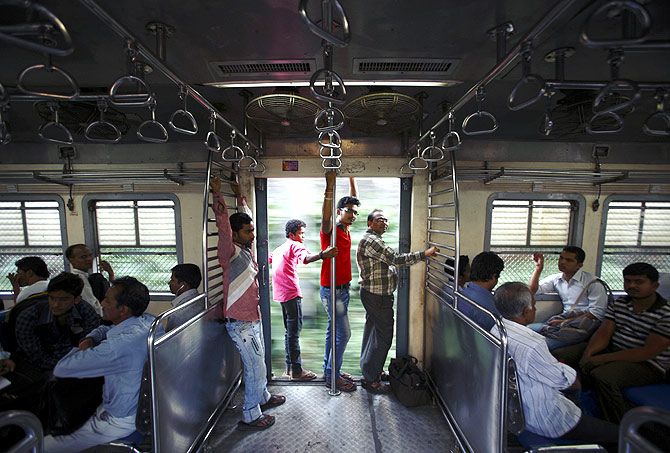 Railway Board Chairman Arunendra Kumar(below left) and Financial Commissioner Rashmi Kapoor (below left) explain key aspects of the railway budget 2014-15 in an interaction with the media. Excerpts:
Railway Board Chairman Arunendra Kumar(below left) and Financial Commissioner Rashmi Kapoor (below left) explain key aspects of the railway budget 2014-15 in an interaction with the media. Excerpts:
What have been the key focus areas?
The budget has used technology in a big way. There are areas of alternating ticketing, cleanliness, etc.
The next area of focus is rail tourism, keeping pilgrimage in mind and to aid the domestic tourism sector.
Cleanliness and catering have been the other areas of priority. We have allotted significantly more funds to these areas.
Also, we plan to introduce semi-high speed and high speed trains soon. We have just completed the trial run between Delhi and Agra for semi-high speed trains. We have also kept the finances in mind.
The working expenses have jumped significantly.
Also, the allowance of staff has increased. That is why the operating ratio worsened to 93.5 per cent in 2013-14 and we are expecting it to be about 92.5 in the current financial year (14-15).
What explains the dip in railways' earnings target for 2014-15 as compared to 2013-14?
We have scaled down the projections made in the interim budget. However, we feel with the introduction of new trains and better systems of selling tickets, the volume should go up.
The waiting queues must go, which is why we are trying to use information technology.
In fact, we are now urging people to buy tickets on mobile phones. We also presume passenger-km will not go up as much as we thought at the time of the interim budget. We also think we should be able to meet the earnings target.
In the first three months, we have already met 16 per cent of the target, without any fare rise.
On the freight side, if the economy grows, our earnings will automatically grow. Otherwise, we are keeping the targets low. We hope to exceed these; the targets are realistic.
 What exactly are we proposing through the foreign direct investment (FDI) initiative? Are there any investors which have shown interest?
What exactly are we proposing through the foreign direct investment (FDI) initiative? Are there any investors which have shown interest?
The bottom line is that Indian Railways is opening up. The build, operate and transfer model has been talked about in this context. It is used for port lines, where there is no other mode of traffic except for port.
So, there the investor may run the train. But if we were to develop a line on, let's say, the Delhi-Mumbai route, the railways will have to run it.
FDI means equity investment by a company in an entity like a High Speed Rail Corporation.
If there is a foreign company investing in HSD rail, it might get the chance to operate it. But rate fixation will remain with the government.
No investors come from day one. There are a few big entities involved in HSD operations globally.
There are few big entities involved in HSD operations globally including JICA (Japan International Cooperation Agency) and SNCF (French Rail). Now, they have to decide whether they want to come and at what condition. There is investor interest.
What is the guarantee that the public-private partnership (PPP) model of development will work this time? It has not worked for many years in the railways. The Sonnagar-Dankuni section of the Eastern Dedicated Freight Corridor (DFC), to be developed on PPP, has not progressed.
PPP will work this time. Earlier, there was no convergence between what investors wanted and what we could offer.
Now, we are trying to go around, asking the investors their views of the projects on offer. On the Eastern DFC, we have acquired land from Dankuni to Gomoh. But there is an issue of hilly terrain from Gomoh to Sonnagar.
Without land, investor interest will vanish. We have a plan for going for a Request For Qualification for this line in September. But all of this is subject to completion of land acquisition.
What are the structural reforms being looked at in the functioning of the ministry? Also, what is the progress on the plan to set up a Rail Tariff Authority?
We are looking at setting up a project monitoring authority at the ministry level. We have to work with the states, where land and law and order issues crop up. We are looking at a standing mechanism to resolve these issues. The body will have officials of Indian Railways and from state governments. The Tariff Authority is to be set up through an executive order. Applications have been invited. The process of screening is on. The Cabinet approval is for setting up a strong advisory body.











